Around over a decade ago now Dragon Quest VIII was first released on the PlayStation 2. At that time, I didn’t know much about Dragon Quest. My cousin had bought the game in order to get the Final Fantasy XII demo that came with it but he never really got into the game. I asked him if I could borrow it to play it and he pretty much just gave it to me. I remember when I first started playing the game and was immediately blown away by the music at the title screen. The world was vast and beautiful, the characters were charming and the game was just a blast. While I never fully beat the game, the impact the game had on me stuck.
Fast forward to today, and the latest Dragon Quest game is releasing world wide: Dragon Quest XI: Echoes of an Elusive Age. If you haven’t seen already, we released some gameplay footage from my journey which you can watch here.
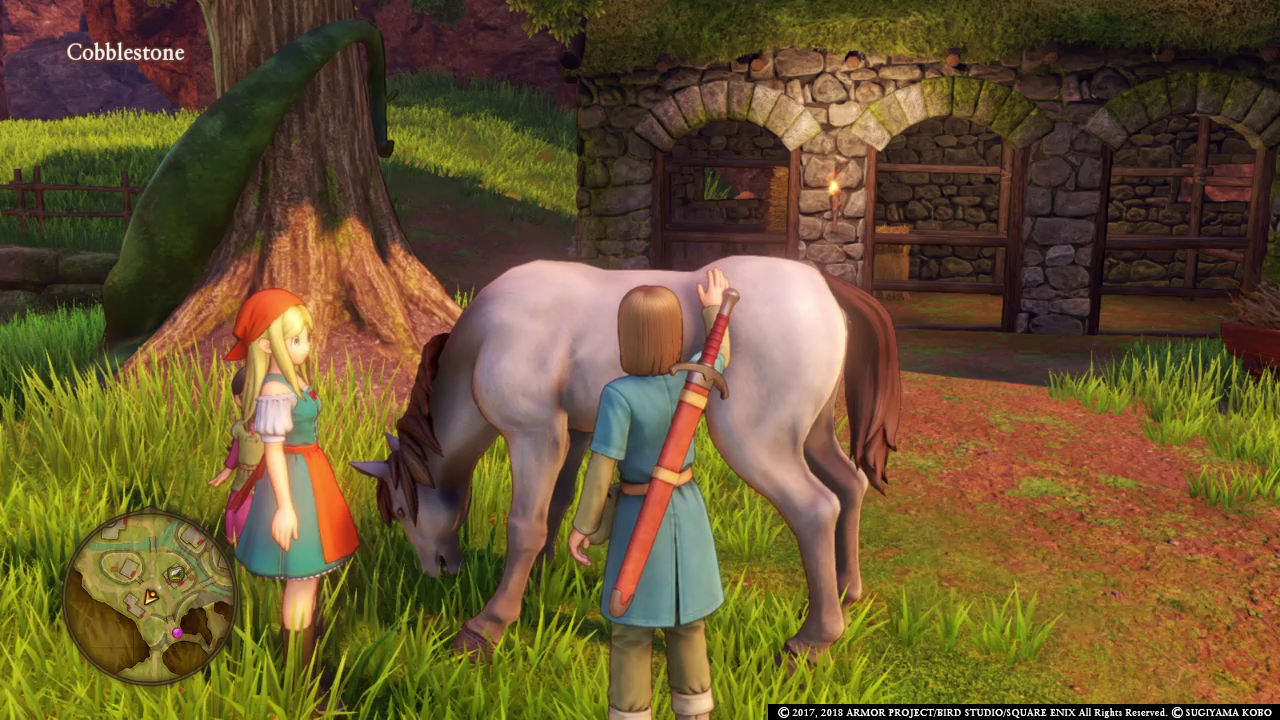
My experience with Dragon Quest XI has been nothing short of amazing. The game begins with you as the Luminary; a reincarnation of a force of light and good chosen by the tree of life, Yggdrasil to banish the darkness from the land. You travel across the vast lands of Erdrea helping out its people and meeting new friends along the way.
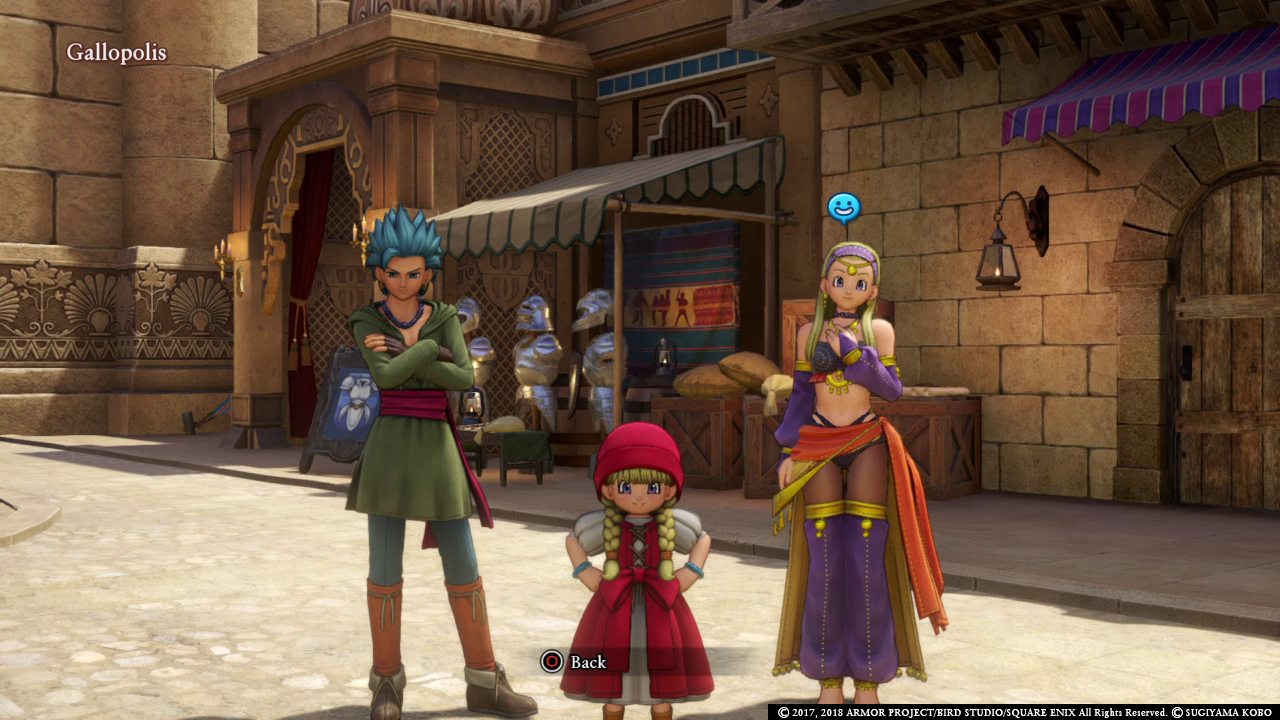
Unlike older Dragon Quest games, you encounter enemies not via random battles, but by running up to them out in the field. You also have the opportunity to get an initial strike to deal some damage before entering combat. This unique style of battles in Dragon Quest XI allows the player to control their experience in the world. You can avoid every enemy you see to meet your objective faster or explore the beautiful landscape, or you can run into every enemy head first to get all the EXP you desire. Personally, I feel that this new style of monster encounters is a welcome change, as I often don’t want to be bothered by enemies and other times I’m looking to fight specific enemies for a drop or perhaps to attack a certain monster that will allow you to mount them for unique effects.
The Dragon Quest series has always been a very traditional style of JRPG using a turn based combat system, and Dragon Quest XI is no different. You can have up to four party members active in battle, and even swap party members out in battle at the beginning of your turn. By default, your party members will be controlled with AI, but you can opt to control them manually if you so desire. I like having full control over my party, and it’s easily accessible both in and out of combat in the Tactics menu.
Different characters have access to different types of weapons and abilities, all of which can be refined and enhanced in a feature unique to Dragon Quest XI known as the Character Builder. In this menu, you spend points into upgrading your characters in different areas. Weapon branches allow you to become more strong weilding a certain weapon and gaining new abilities for said weapon, while other branches might offer certain stat buffs or unique abilities for that character.
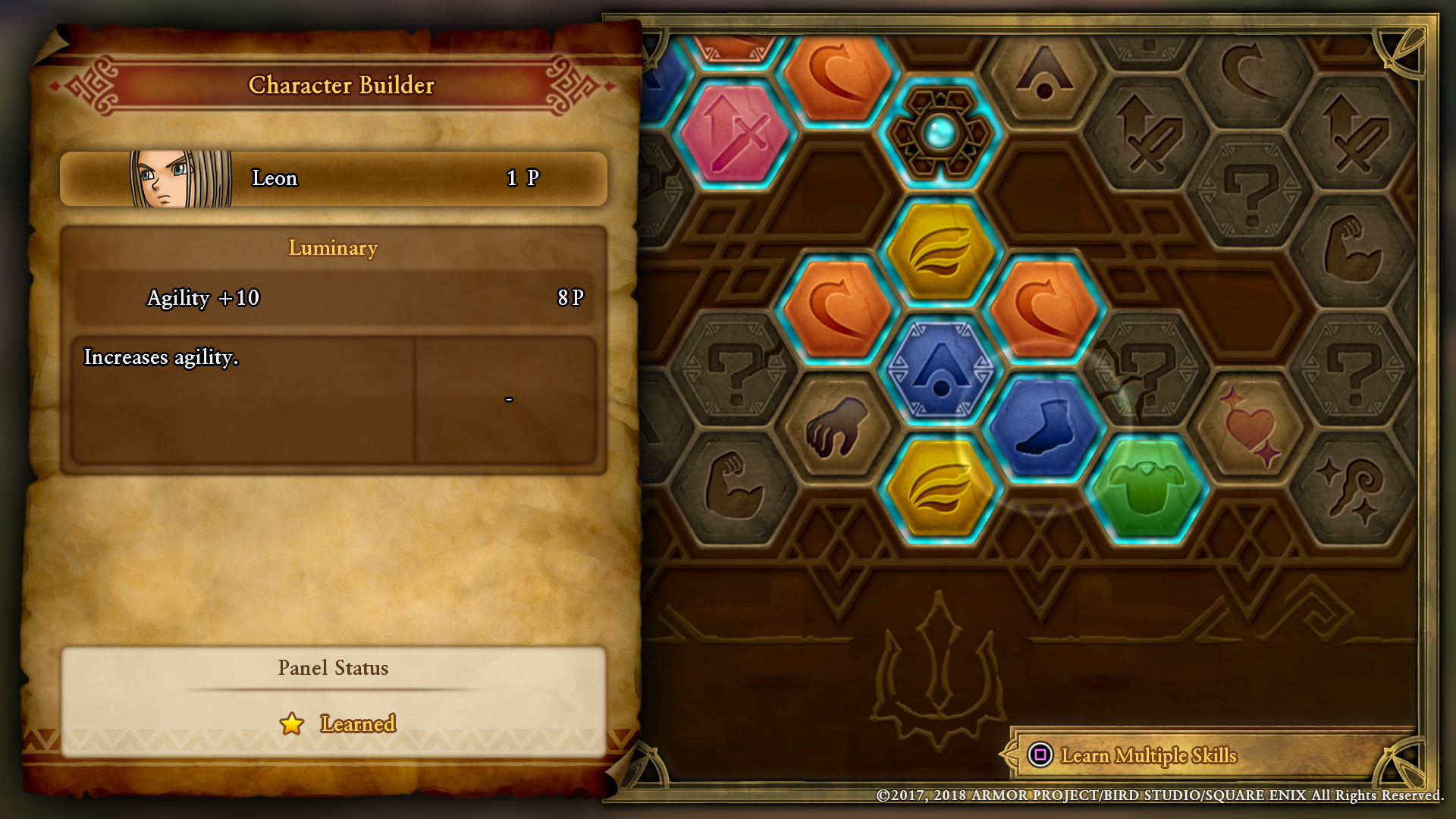
By utilizing one of the many Churches or Angel Statues across the world, you can pay some gold to reclaim all points invested into a certain tree if you wish to respec under a different branch. This feature is greatly appreciated, as it lets you discover how you want to play a specific character in battle. Perhaps you want to use a mage staff and focus on magic spells, or maybe use a Spear or a Whip instead and focus on direct damage.
While your party has many spells and abilities to dish out in combat, some of your more flashier abilities come by the way of “Pep”. Over the course of a battle, you have the chance of becoming “Pepped Up”. In this state, your party members will have increased stats allowing them to hit harder and survive longer. Not only that, but you can also combo with other party members to unleash attacks with various effects. This is unlocked via which abilities you have in your Character Builder. When unlocking a new tile, you will sometimes notice that you have a piece specifically for Pep. These combo moves can dish out big damage on a single enemy, a group of enemies, or even inflict status ailments. The bigger Pep moves even have their own animations which show the characters interacting with each other in battle in a fun way that’s always enjoyable to see.
Another new addition to combat is in this new style of controlling the camera and the player. While it doesn’t make an impact on the actual battle, choosing the free form mode of combat allows you to position your party members and control the camera in battle giving you the sense of having freedom in how you view your combat. It doesn’t add a lot to the game, but I applaud them for trying something different, and I quite like it.
It wouldn’t be a JRPG of course without the story. As previously mentioned, Dragon Quest XI‘s story is about light vs darkness, a trope used quite often in JRPGs and gaming as a whole. While the core story revolves around this concept, the story itself is much more than that. Dragon Quest is about the adventure. In this game, I experienced happiness and sadness. I met a colorful cast of companions and characters from the overly eccentric to the cold and stoic. Each area in the game feeling like it has its own parallel in the real world but in a more fantastical setting. I feel that while the story isn’t highly complex, it is a beautiful story in its own right. It’s a story that you don’t need to think too much about to understand. There were plenty of times where I would get excited about what I knew was to come. Sometimes it can be predictable, but there are also times where it wasn’t. And I think this made for a nice enjoyable experience overall. That being said, I can be pleased pretty easily with storytelling as long as it isn’t horrible. Some people might not like a simple story and I completely understand that. However, if you’re one of those people, I think you can still enjoy this game.
New to the world wide edition of the game is English voice acting, something not at all present in the Japanese release. I do feel that voice acting adds a lot to the game. It enhances scenes with emotion when the performance is good. That being said, there are a few choices that don’t always hit the mark. However, most of the voices I feel are fantastic. Sylvando’s voice for example really suits his eccentric attitude, juxtaposed with Serena the healer mage’s calm soothing voice which matches her timid personality. All of the voices have European accents which do add a bit of charm to the world, but at some times can make for understanding dialogue a bit difficult, especially with written text trying to imitate a foreign language. However, with these minor struggles, I feel that it sets each area in the world apart from one another and makes the world really feel diverse.
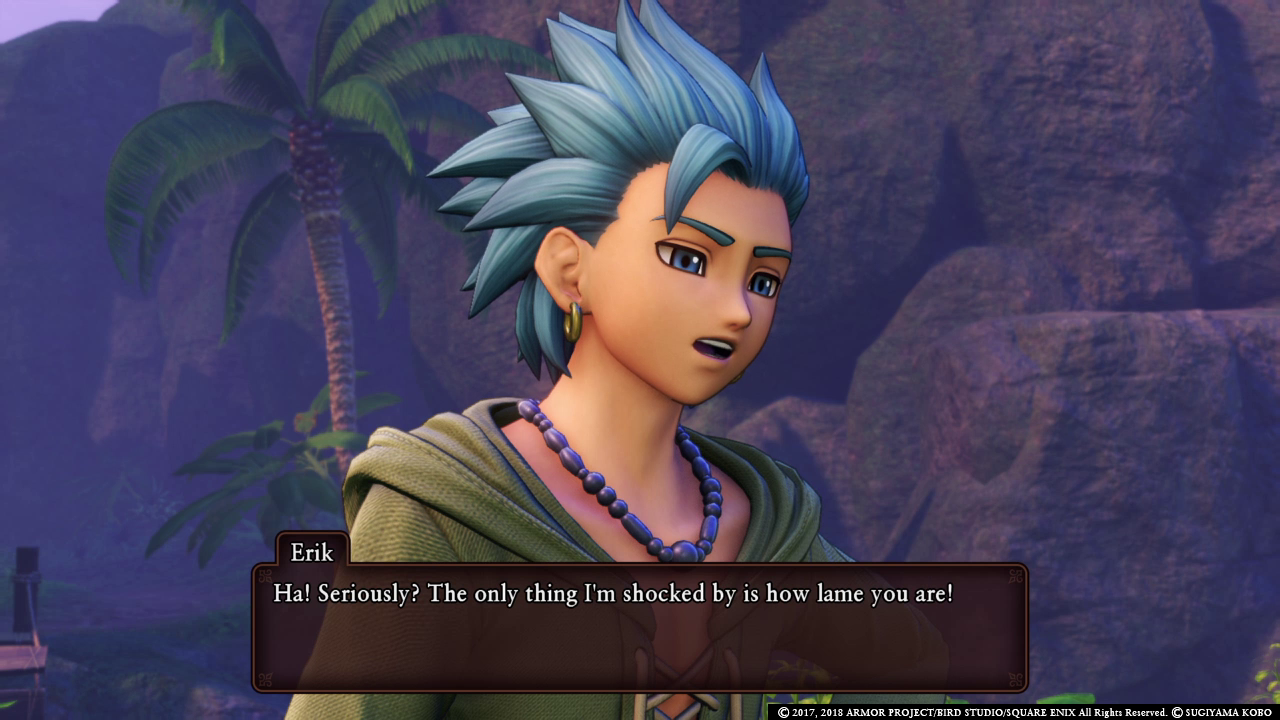
A new feature added in Dragon Quest XI is the quest system. In JRPGs it’s very common to have quests, however, it can be very easy to lose track of what you’re meant to be doing and where to go. Thankfully, the game keeps track of all of this in your quest menu. You can see what quest you have accepted, where new quests can be found and the status of your quests and their rewards. For someone who likes to 100% games, I really enjoy this feature as it allows you to manage your progression in these side elements a lot easier while also reminding you on where you need to go without giving you all the details. There are a few quests that can be pretty difficult. One in particular uses riddles, and without understanding the dialect of the English accent many characters in the game have, it can be a little tricky. Not only that, but there are some quests which have you find something in an area without much direction which is the point of a quest but also it can be frustrating when you spend hours not finding what you’re looking for. Other times, I find things right away, so they are balanced in a sense and not in others. Overall, I enjoy the quest system and I think it’s a fantastic addition to the series.
With quests come rewards, and some of these rewards might be materials that you can use in crafting. Introducing the Fun-Size Forge: your way of crafting items in Dragon Quest XI. Available fairly early on in game, this feature is much like some other crafting iterations in Dragon Quest, but this time you have more control over your craft. Alchemy in Dragon Quest VIII for example was just about getting ingredients together and discovering recipes. This time around in Dragon Quest XI, it’s about discovering recipes in books or in treasure chests or as quest rewards and then heading to camp to craft a new weapon or armor piece or even enhancing existing pieces.
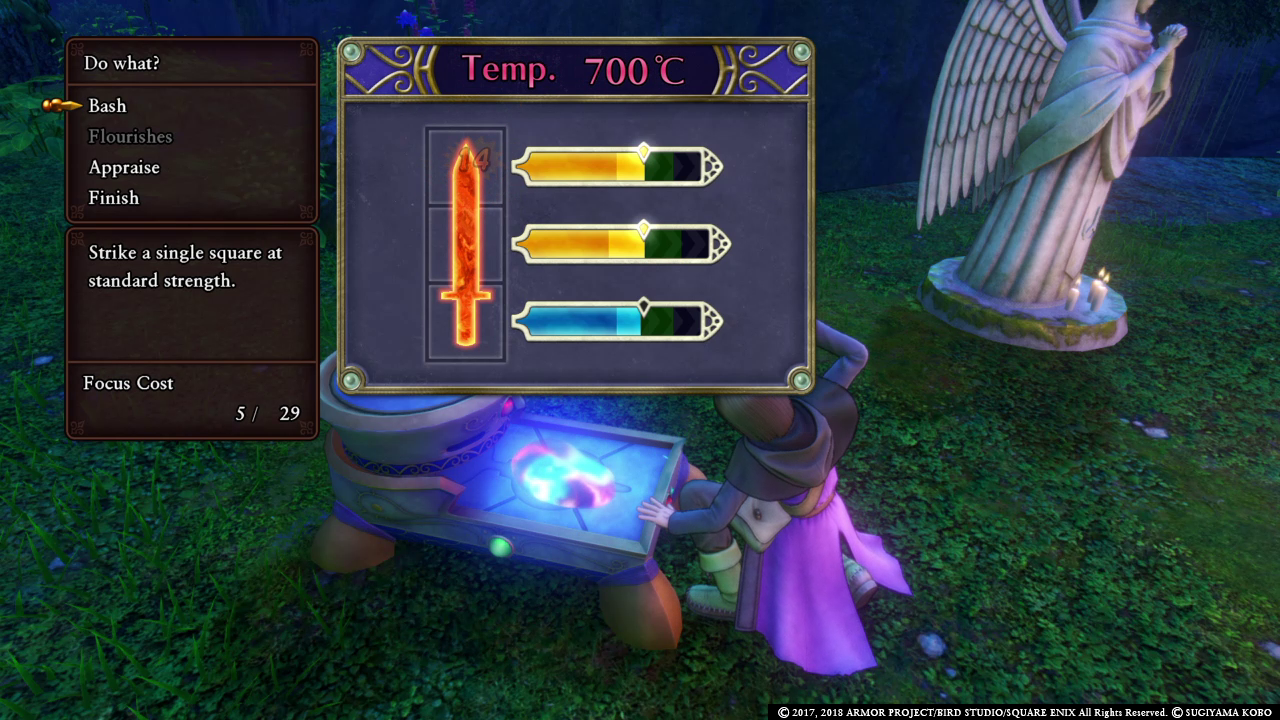
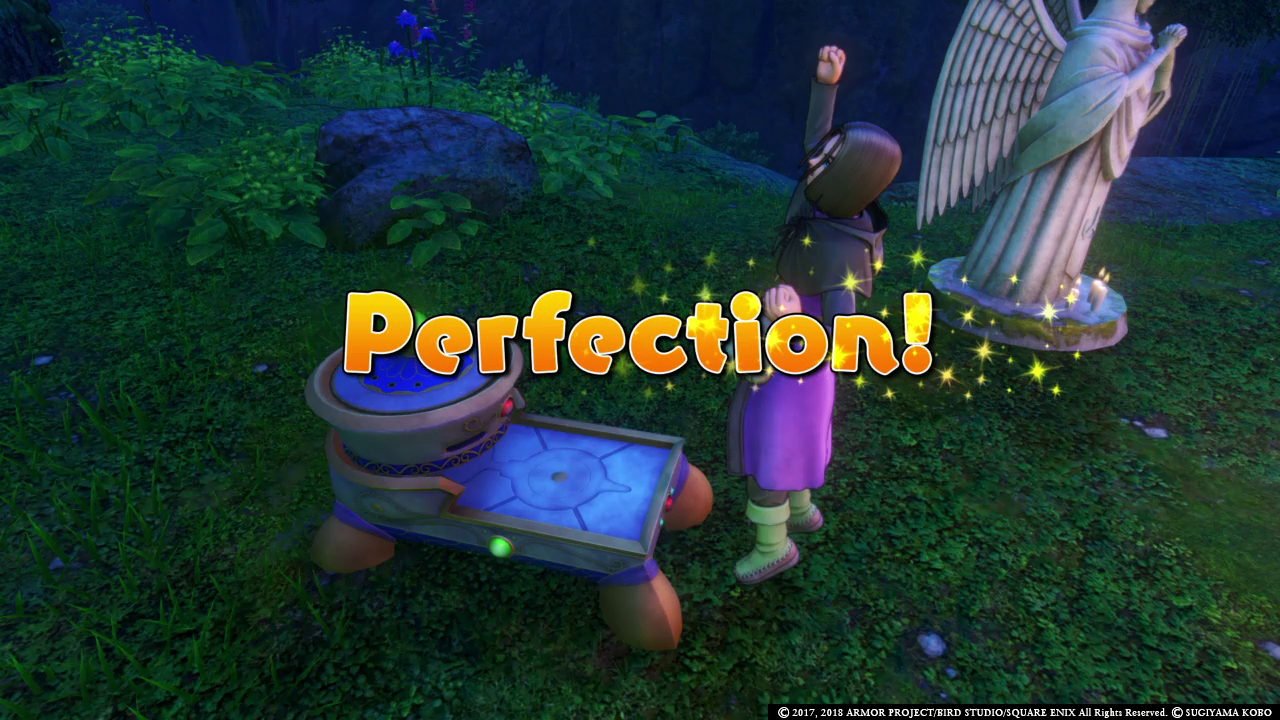
The forging system in this game I think sits in a perfect middle ground of not being too easy while not being overly complex. You’ll rank up over your adventure giving you new special moves to make progress as well as increasing your focus points which you need to use said moves. Each item is given a rank in how difficult it is to create. If you fail, you’ll just get a base item, but if you make an item at even a decent level you’ll be rewarded with Perfectionist’s Pearls which you use to enhance items.
With most of the core gameplay elements out of the way, I’d like to talk a little more technical about the game. First off, the graphics. As you can see from my screenshots, the game looks gorgeous. It’s one of the best looking JRPGs I’ve ever seen. Dragon Quest XI isn’t going for a realistic look, instead it tries to go for an art style that Dragon Quest is known for. There are fields of luscious green grass swaying in the wind, white stone beach side cities that glow in the night and so much more. Everywhere you go there is life.
Dragon Quest‘s world isn’t open world, and that’s a good thing. While I do enjoy open worlds, I don’t think that it works for a game like this. Each area feels hand crafted, like an artist painting a painting with each brush stroke given purpose. No speedtree landscapes, but everything placed down with purpose and reason. This creates a gorgeous world that you can take a screenshot from virtually any angle and are rewarded with what looks like a work of art. Dragon Quest XI even has a feature that allows you to go first person to adjust a camera with zoom and height to get the perfect shot as well as hiding the UI. A much needed feature for such a beautiful world.
My review copy of the game was for the PlayStation 4, and I have the regular PS4 that came out at launch, not a PS4 Pro. The game runs at 720p and at 30 FPS. The game feels smooth most of the time, however, there are some cases where there can be some slow down with the framerate in areas with a lot going on, and even in some cases, the game stops to load. These moments do take you out of the experience, but they don’t happen very often. My game is installed on a hard disk drive as well, and not a solid state drive which also will impact the performance. Overall, I feel that the game runs very well on the PS4 while still managing to look beautiful with very little hiccups.
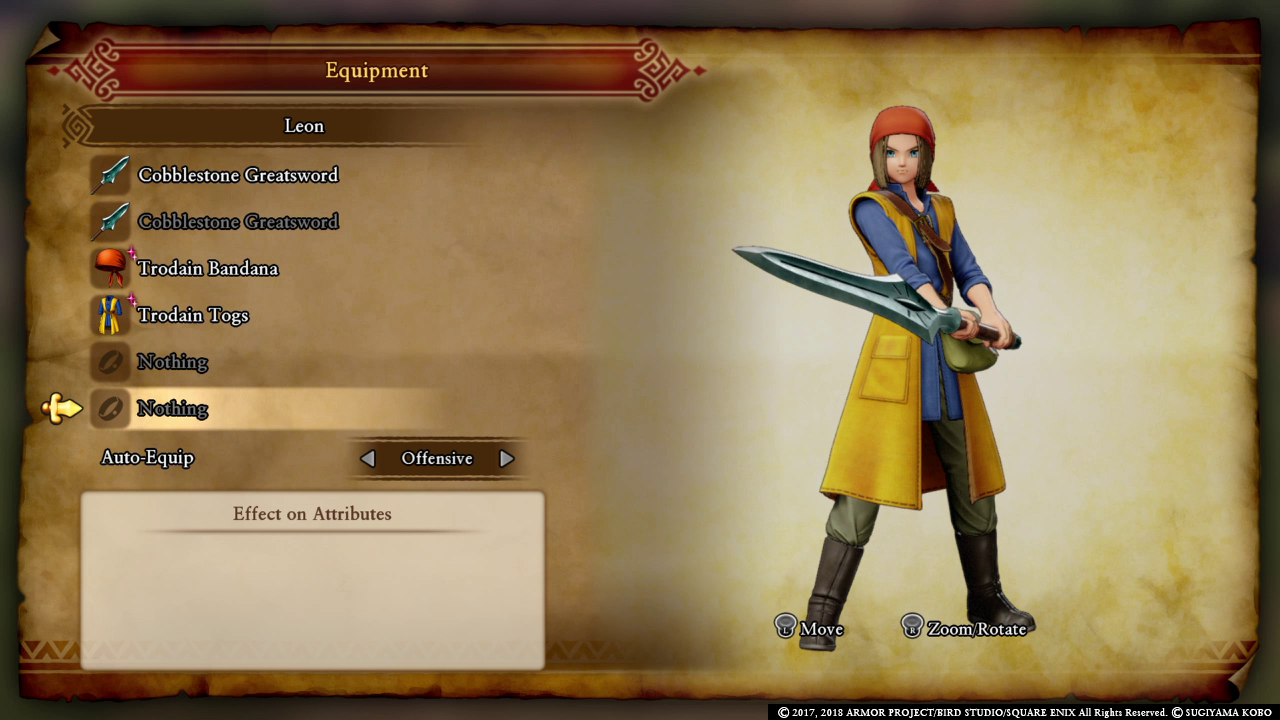
When Dragon Quest XI was first announced, I quickly jumped at opportunities to translate news and to get hyped about the game. When it came time to review it, I knew I had to be all over it, and I’m glad I was given the opportunity. This game brought me on a magical journey over the past 150+ hours and I’m still trying to 100% it. It feels both like a classic game and a new game at the same time. I think that’s part of the Dragon Quest charm. There’s even a throwback to the Dragon Quest VIII‘s protagonist as an outfit you can wear that shows up in game. In a strange way, it almost feels like the game was made for me, it was inviting me to immerse myself back into the Dragon Quest universe. Now if only they would remaster Dragon Quest VIII for the PS4/PC…
Disclaimer: Review code for Dragon Quest XI was provided to Nova Crystallis by the publisher Square Enix.
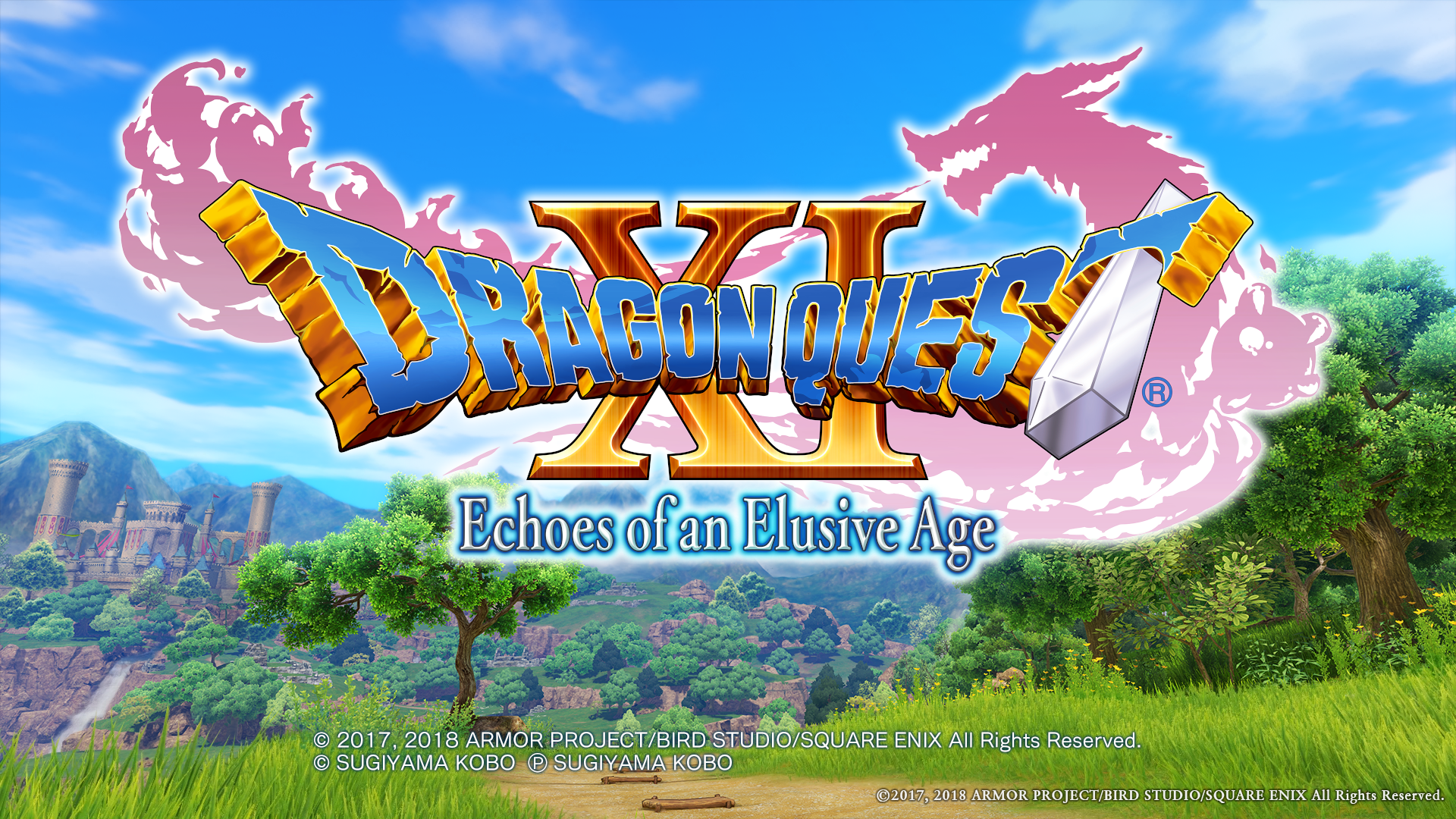
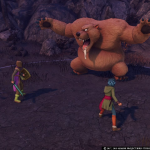
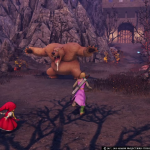
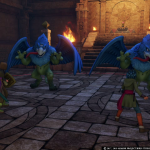
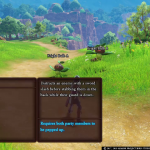
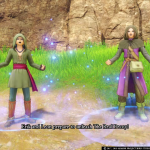
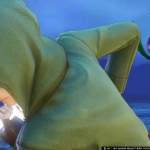
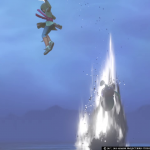
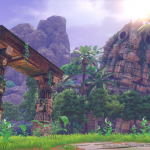
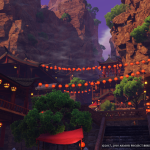
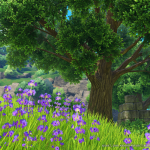

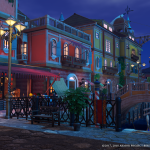

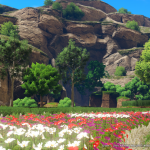

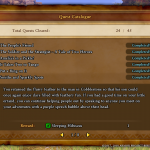
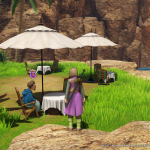
Recent Comments